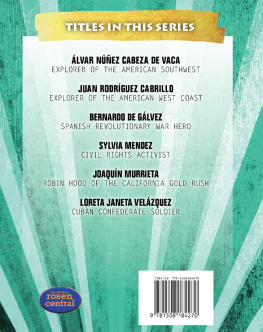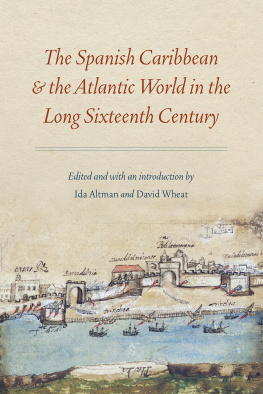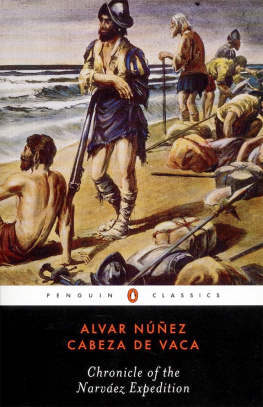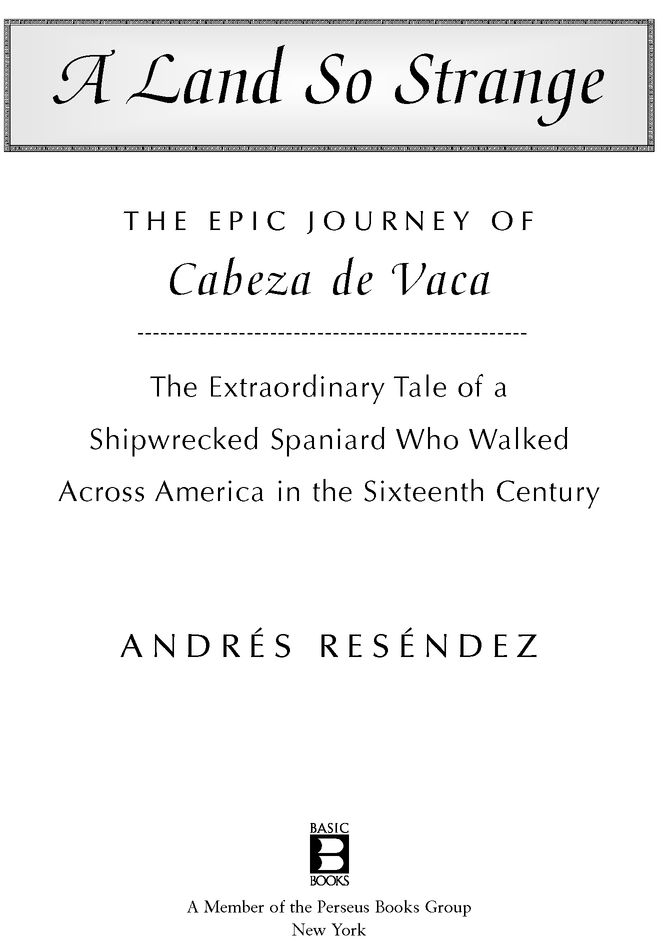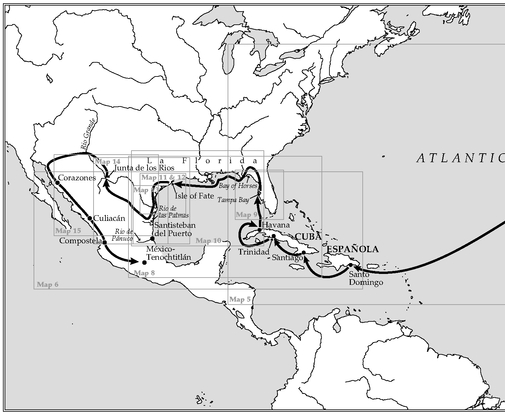Table of Contents
To Andrs Resndez Medina in memoriam
Introduction
IN THE SPRING OF 1536, A POSSE OF EUROPEAN horsemen ventured north from Culiacn. Barely one generation after Columbus they were, quite literally, the advancing edge of Spains empire in North America. They were still becoming familiar with this region, now part of northwestern Mexico. The riders could gaze at the lush slopes of the Sierra Madre Occidental on the right. The Pacific Ocean with its loud crashing waves lay to the left. Straight ahead, a narrow coastal plain seemed to extend forever. On this strip of land, at once tropical and open, they could roam as far as they wished without ever expecting to find another white persononly Indian prey.
The horsemen were busy. Rounding up human beings was unpleasant but profitable. And they looked to an entire continent teeming with natives who could not move faster than their own legs would carry them. Even a small cavalry detachment could turn into an extremely efficient enslaving machine. And thus the posse burned villages and ran down men, women, and children.
One day, four of the slavers caught sight of thirteen Indians walking barefoot and clad in skins. In the distance the natives must have seemed ordinary to the horsemen except for one thing: rather than scurrying away, the Indians headed straight toward them. A sense of unease must have spread through the Christians. But they stayed put because the approaching Indians did not seem to harbor ill intentions.
At closer range the unexpected details began to emerge. One of the natives seemed very dark. In fact, he was black. Was he an Indian too, or an African emerging from the depths of North America? The horsemens unease must have turned into shock when they realized that one of the others in the group was a white man. He had gone completely native. His hair hung down to his waist, and his beard reached to his chest. The mans skin was leathery and peeling.
As the two parties approached, the slavers could hear that the haggard white man spoke perfect Spanish. They became dumbfounded. They remained looking at me for a long timelvar Nez Cabeza de Vaca would later recallso astonished that they neither talked to me nor managed to ask me anything.
Cabeza de Vaca had to do the talking. He first asked to be taken to the slavers captain. Next he wanted to know what the Christian date was and requested to have it officially recorded. The precise date has not reached us in spite of Cabeza de Vacas insistence, but it must have been April 1536. After these formalities were out of the way, Cabeza de Vaca and his African companiona resilient slave named Estebanicobegan to tell their story of wandering adrift in a completely alien continent, a tale that had begun eight years earlier with a flawed leader in search of redemption.
FOR SHEER DRAMA and excitement, the journey of Cabeza de Vaca and his companions remains unrivaled, even by the adventurous standards of the Age of Exploration. Out of 300 men who set out to colonize Florida in 1528, only four survived: Cabeza de Vaca, two other Spaniards, and Estebanico. They became stranded. And to reenter European-controlled territory, they were forced into a harrowing passage on makeshift rafts across the Gulf of Mexico, years of captivity in what is now Texas, and a momentous walk across the continent all the way to the Pacific coast.
This small band of men thus became the first outsiders to behold what would become the American Southwest and northern Mexico, the first non-natives to describe this enormous land and its peoples. Conversely, innumerable natives living in the interior of the continent experienced the passage of the three Spaniards and the African as an extraordinary portent, a first brush with the world beyond America. The natives called the four travelers the children of the sun because they seemed to have come from such unimaginably remote lands.
It is tempting to narrate their journey as an extreme tale of survival: four naked men at the mercy of the natural elements, facing an extraordinary array of native societies. Comparisons to Joseph Conrads Heart of Darkness are difficult to avoid. It was certainly a hellish journey. But it was also much more. At its heart, it is the story of how a handful of survivalists, out of necessity, were able to bridge two worlds that had remained apart for 12,000 years or more. Deprived of firearms and armor, the castaways were forced to cope with North America on its own terms. They lived by their wits, mastering half a dozen native languages and making sense of social worlds that other Europeans could not even begin to fathom. Incredibly, they used their knowledge of native cultures to escape from enslavement and re-fashion themselves into medicine men. Eventually, their reputation as healers preceded them wherever they went, as they moved from one group to the next in their quest for deliverance.
The castaways insight into native North America is especially poignant at a time when Europeans debated whether the natives of America were fully human and crown officials reexamined Spains conquests. In just five decades since Columbus, Iberians had rushed headlong into the New World. Men and women of enterprise and ambition had explored and ultimately devastated the islands of the Caribbean. More recently, Hernn Corts and Francisco Pizarro had subdued millions of Indians in Mexico and Peru. These conquests constituted fantastic feats of daring. But they had been achieved at a great human cost, prompting a determined group of friars and crown officials to launch a reformist movement to change Spains methods of conquest and convince colonizers of the essential humanity of Indians. The ensuing debate resonated throughout the empire. If it turned out that Indians did not possess human souls, then ruthless conquistadors would be permitted to enslave them by the millions. But if, however, these natives were endowed with Gods spirit, then they would have to be painstakingly Christianized and their rights respected.
Against this backdrop, the journey of the four castaways constitutes a rare turning point in the history of North America, every bit as momentous and full of possibilities as the landing of the Mayflower Pilgrims or the arrival of Corts on the shores of Mexico. The experience of Cabeza de Vaca and his companions afforded Spain an opportunity to consider a different kind of colonialism. These four pioneers had revealed the existence of many native cultures north of Mexico and the availability of precious metals, buffalo, and other resources. But instead of advocating a conquest in the traditional mold, Cabeza de Vaca and the others proposed a grand alliance with the native inhabitants. Over the course of their long odyssey, they had come to recognize the natives of North America as fellow human beings. Their life-changing experience had persuaded them that a humane colonization of North America was possiblea far cry from the views held by most of their contemporaries in the Old World. Their journey thus amounts to a fork in the path of exploration and conquest, a road that, if taken, could have transformed the brutal process by which Europeans overtook the land and riches of America.


